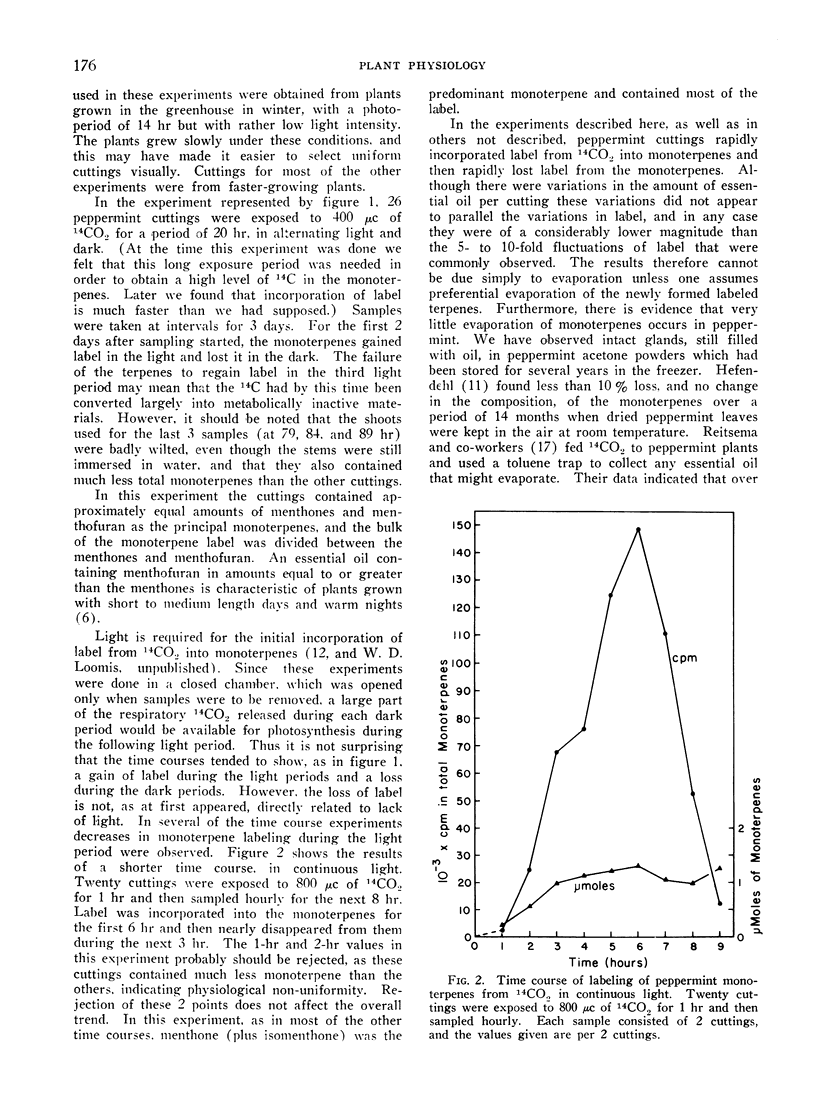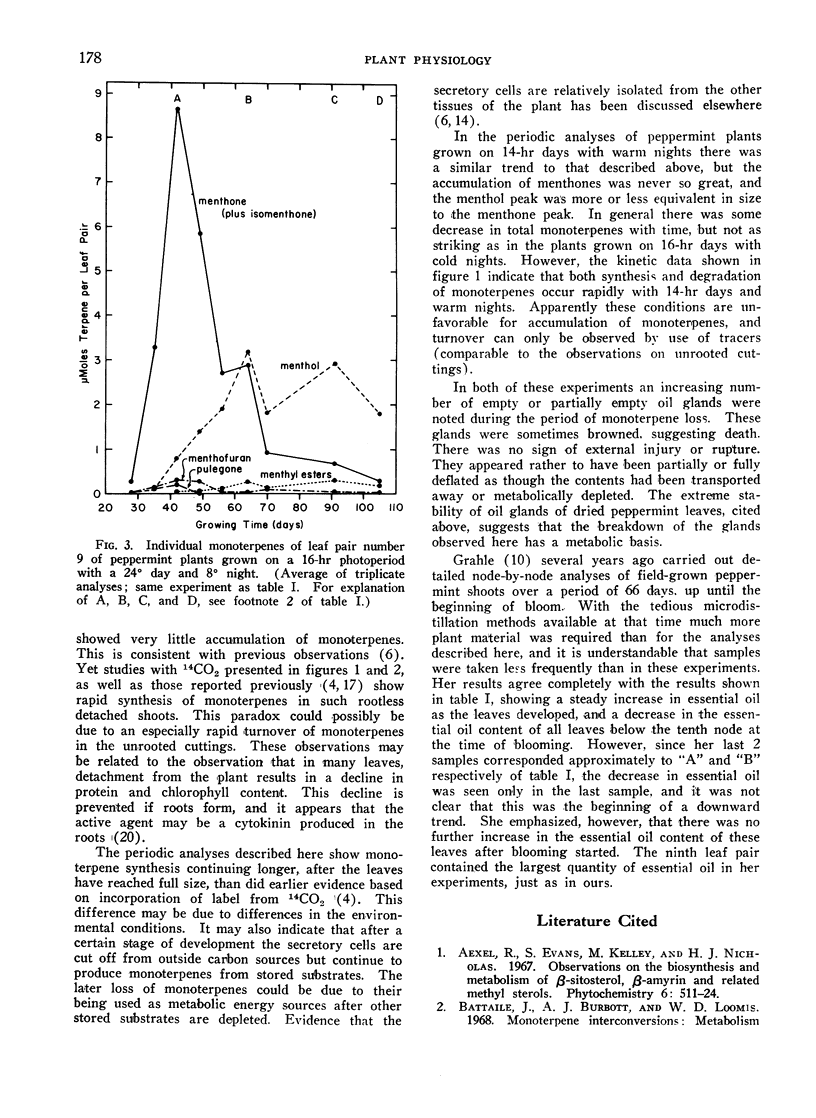Abstract
Two types of experimental evidence are presented which suggest that the monoterpenes of peppermint (Mentha piperita L.) are subject to metabolic turnover. In kinetic studies with 14CO2, peppermint cuttings rapidly incorporate label into the monoterpenes and then lose most of the label from the monoterpenes, without corresponding changes in the amount of monoterpenes present. When peppermint plants are grown in a controlled environment (16-hr photoperiod, 24° day, 8° night) and analyzed at intervals leaf pair by leaf pair, there is a steady increase in monoterpenes until the time of floral initiation, followed by a rapid decrease. It is suggested that monoterpenes may serve as substrates for energy metabolism in the secretory cells after other stored substrates have been depleted.
Full text
PDF






Selected References
These references are in PubMed. This may not be the complete list of references from this article.
- BATTAILE J., DUNNING R. L., LOOMIS W. D. Biosynthesis of terpenes. I. Chromatography of peppermint oil terpenes. Biochim Biophys Acta. 1961 Aug 19;51:538–544. doi: 10.1016/0006-3002(61)90611-4. [DOI] [PubMed] [Google Scholar]
- BATTAILE J., LOOMIS W. D. Biosynthesis of terpenes. II. The site and sequence of terpene formation in peppermint. Biochim Biophys Acta. 1961 Aug 19;51:545–552. doi: 10.1016/0006-3002(61)90612-6. [DOI] [PubMed] [Google Scholar]
- Breccia A., Badiello R. The role of general metabolites in the biosynthesis of natural products. I. The terpene marrubiin. Z Naturforsch B. 1967 Jan;22(1):44–49. [PubMed] [Google Scholar]
- Burbott A. J., Loomis W. D. Effects of light and temperature on the monoterpenes of peppermint. Plant Physiol. 1967 Jan;42(1):20–28. doi: 10.1104/pp.42.1.20. [DOI] [PMC free article] [PubMed] [Google Scholar]
- GRAHLE A. Zur Lokalisation des ätherischen Ols im Spross von Mentha piperita. Pharmazie. 1955 Aug;10(8):494–500. [PubMed] [Google Scholar]
- HEFENDEHL F. W. DAS VERHALTEN DES AETHERISCHEN OLS VON MENTHA PIPERITA L. BEI LAGERUNG GETROCKNETER DROGE. Pharmazie. 1963 Nov;18:777–780. [PubMed] [Google Scholar]
- REITSEMA R. H., CRAMER F. J., SCULLY N. J., CHORNEY W. Essential oil synthesis in mint. J Pharm Sci. 1961 Jan;50:18–21. doi: 10.1002/jps.2600500104. [DOI] [PubMed] [Google Scholar]
- SCHIB R. Untersuchungen über tageszeitliche Schwankungen des Wirkstoffgehaltes in Arzneipflanzen. III. Die Tagesperiodizität des Gehaltes an ätherischem Ol im Laubblatt von Salvia officinalis L. Pharm Acta Helv. 1958 Jan;33(1):32–50. [PubMed] [Google Scholar]
- WHISTLER R. L., YOUNG J. R. The role of hemicelluloses in the oat plant. Arch Biochem Biophys. 1960 Jul;89:1–5. doi: 10.1016/0003-9861(60)90002-3. [DOI] [PubMed] [Google Scholar]
- Waller G. R., Tang M. S., Scott M. R., Goldberg F. J., Mayes J. S., Auda H. Metabolism of ricinine in the castor plant. Plant Physiol. 1965 Sep;40(5):803–807. doi: 10.1104/pp.40.5.803. [DOI] [PMC free article] [PubMed] [Google Scholar]


